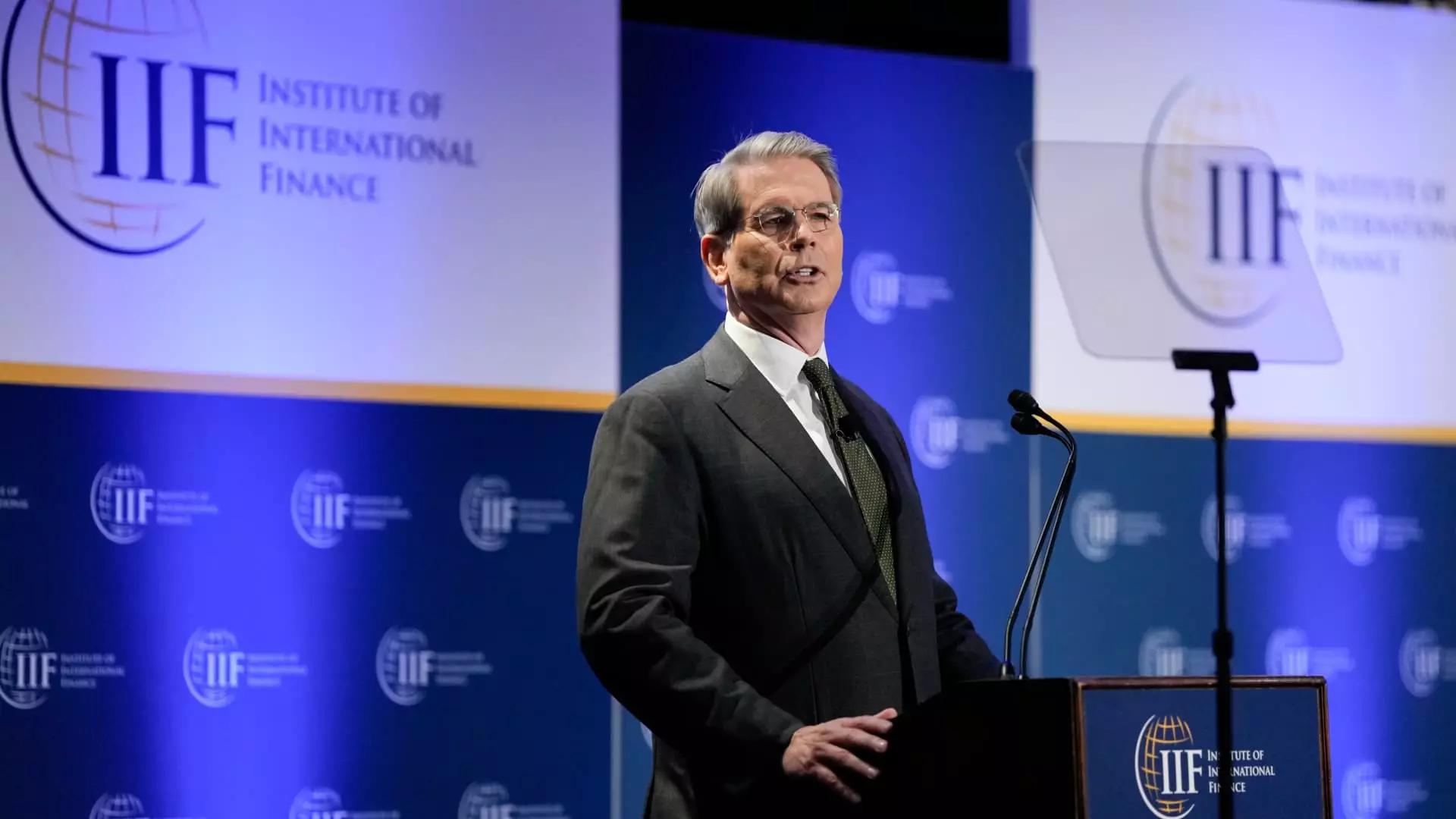The relationship between the United States and China has long been characterized by a delicate dance of economic competition and interdependence. Recently, Treasury Secretary Scott Bessent expressed optimism about the potential for a transformative trade agreement, suggesting that the nations could tackle their imbalances collaboratively. However, this optimism may be naive in the face of structural problems that go far deeper than mere tariff percentages. The proposed rebalancing could be nothing less than a euphoric ideal detached from the gritty realities of economic competition and political maneuvering.
Bessent’s call for unity is encapsulated in his remark, “If they want to rebalance, let’s do it together.” However, trade negotiations are seldom moves of goodwill; they involve strategic posturing that can lead to tensions boiling over. The imposition of tariffs as high as 145% on Chinese goods by President Trump showcases not just economic concerns but a broader narrative of national security and global dominance. It is not simply about restoring equilibrium; it is a game of chess where both sides fear checkmate from the other.
Tariffs: A Double-Edged Sword
The notion of reducing tariffs to between 50% and 65% might sound like a compromise, but it is essential to remember that these figures still signify a considerable barrier to trade. Bessent highlighted that the status quo of high tariffs is unsustainable, yet those same tariffs serve as tools that drive home political messages intended to bolster domestic manufacturing capabilities. They are a breeding ground for backlash, fuelling anti-globalist sentiments among voters who feel left behind.
Moreover, high tariffs can lead to retaliatory measures by China, entrenching the countries further into their protective stances. Although Bessent expresses hope for collaboration, the reality is that exchange rates, labor costs, and technological advancements further complicate these discussions. It is essential to note that overly aggressive tariff policies are tantamount to playing with fire; they can ignite economic flames that engulf not only the perpetrators but the entire global economy.
Institutional Reform: A Necessity
Bessent didn’t shy away from criticizing established institutions like the World Bank and the International Monetary Fund (IMF). His concerns about “mission creep” and the need for reform speak volumes about the challenges facing global governance. When institutions favor the status quo over innovation, they risk falling into irrelevance. The call to stop financial assistance to China, a nation that has long since graduated from dependency status, would represent a significant shift in strategy. Treating China as a developing country is absurd when viewed through the lens of its staggering economic rise.
Yet, one must wonder: will this reform be enforceable and effective? The bureaucratic inertia often found in such institutions necessitates a reevaluation of their missions and a more dynamic approach to modern economics. The proposed timeline policies hinted at by Bessent could either be transformational or just another round of hollow promises devoid of meaning.
A Cautionary Note
Bessent points to the hollowing of America’s manufacturing sector as a product of intentional policies enacted by other countries. While his arguments possess elements of truth, they also risk caricaturing the complexities of globalization. The real challenge lies not solely in blaming “other countries” for America’s industrial decline but recognizing that the factors contributing to the erosion of manufacturing jobs are multifaceted. Automation, labor practices, and consumer preference shift play equally pivotal roles in this equation.
In a complex world, one cannot ignore the adverse impacts of unilateral decisions imposed by nationalistic policies. The very idea of striving for an ideal “beautiful rebalancing”—as advocated by Ray Dalio—can veer perilously into good intentions paving the way to economic hell.
What we need is a nuanced understanding that avoids the binary of “us versus them.” In this era of globalization, it is incumbent upon leaders to recognize interconnectivity as a source of strength rather than a vulnerability. Trade can and should evolve toward a framework that benefits all parties while lowering tensions.


Leave a Reply